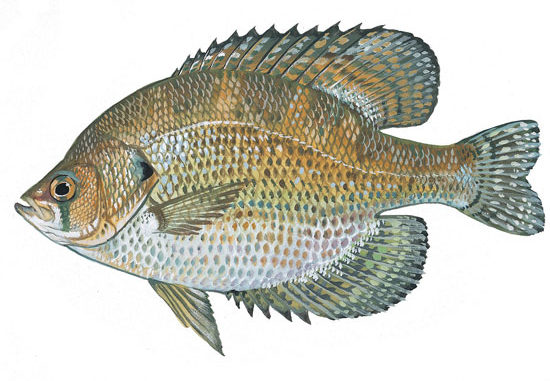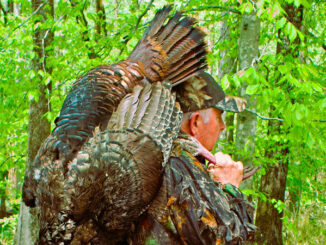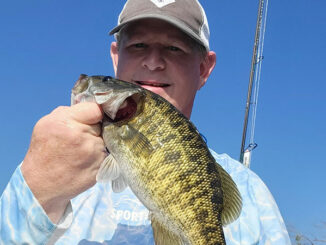
This little-known panfish is small in size, tasty on the table
One of the lesser-known, and the least occurring panfish in the Carolinas is one that many anglers never catch or even lay eyes on. Many have never even heard of it. And of those who have caught one, many of them shrug at the sight and chalk them up as a strange looking bream. The flier (Centrarchus macropterus) exists sparingly in both states. But they congregate in big numbers throughout certain bodies of water.
The shape of this panfish appears somewhat round, and the upper and lower fins are almost mirror images of each other. The fish is olive green to silver in color, and the upper body has four to five short, dark vertical rows. A surefire way to identify the flier is to look for the black or green teardrop marking below its eye. A more scientific way is to count the spines on the dorsal fins. Fliers have 11 to 13 of these, more than any other fish in the bream family.
Like bluegills, fliers have black gill covers, but they lack the black spot on the dorsal fin that distinguishes bluegill from other types of bream. When young, however, fliers do have a dark spot which is outlined by an orange ring in a similar location. But these marks disappear as the flier ages.
Fliers spawn earlier than most other panfish
As with most other panfish, the males of this species build nests, or beds, which are often located in groups with an overlapping fashion, usually in shallow water. They spawn early in the year in comparison to other bream, usually beginning in March when the water reaches 55 to 65 degrees, and they usually stop spawning by May. Females can lay up to 35,000 eggs at a time, which are fertilized, and then guarded, by males.
While these fish are able to live in a variety of water types, they prefer moderately moving water in slower streams and swamps, but can live in ponds and drainage areas. They are usually caught around vegetation, and will bite crickets, worms, and small spinning lures like Johnson Beetlespins. They are found mostly in the coastal plains of both Carolinas, and also occur infrequently throughout other regions of the Palmetto and Tarheel states.
Anglers rarely, if ever, specifically target fliers; they usually catch these fish while targeting bluegill, shellcracker, or redbreast bream. But they are a welcome addition for anglers who recognize the species.
These fish are tasty table fare, and though they are similar in taste to bluegills and other panfish, most anglers who have eaten them report their meat is whiter and slightly sweeter than other bream.
Fliers are often misidentified as crappie
Because of their shape, fliers are often misidentified as white crappie or black crappie, and many anglers never know them by any name other than “bream.” Some anglers believe they are a hybrid of crappie and bluegill, but this is not the case.
Throughout the south, fliers are also known in certain regions by several other names, including fly bream, flier bream, crying bream, round bream, depression bream, and government fish.
It’s one of the smallest of all the bream in the Carolinas, with an average length of five inches, and an average weight of three ounces. They can live up to five years in the wild, and have been known to live up to twice as long in aquariums.
The South Carolina state record flier stands at 1-pound, 4-ounces, and was caught in Hemingway by angler Steve Bryant of Hemingway in 1977.
North Carolina’s state record flier was caught in 1990 by Douglas McCall, who caught the 1-pound, 5-ounce fish on a cricket in a private pond.
The world record flier was caught in Jackson County, Florida in a private pond in 2015 by Twila Gates, and weighed 1-pound, 5.5-ounces.
Interestingly, the United States Navy named a Gato-class submarine the USS Flier in 1943 after the species, and the Native Fish Conservancy’s newsletter is entitled “Flier,” also after the species.





Be the first to comment